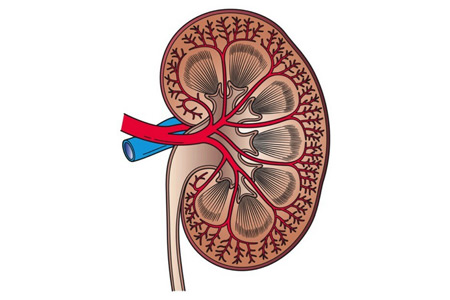Traditionally, kidney health has been monitored by measuring blood creatinine levels, which indicate muscle breakdown. High creatinine levels can suggest that the kidneys are not filtering waste efficiently. However, creatinine levels can be affected by a person's muscle mass and only rise significantly after more than 75% of kidney function is lost.
As an alternative, SDMA, a byproduct of protein breakdown, has emerged as a more reliable indicator of kidney function. SDMA accumulates in the bloodstream because it cannot be metabolized and is primarily excreted by the kidneys. Measuring SDMA in urine provides a more accurate indicator of kidney health. Unlike creatinine, SDMA levels increase even with mild kidney impairment (25–40% loss) and are not significantly influenced by muscle mass.
In a recent study, researchers led by Professor Jong Pil Park from Chung-Ang University, Republic of Korea, introduced a biosensor to detect SDMA levels in urine. This non-invasive method offers a reliable alternative to blood tests, allowing for earlier detection and treatment of kidney disease. This study was made available online on October 22, 2024, and will be published in Volume 267 of the journal Biosensors and Bioelectronics on January 01, 2025.
"Since kidney disease is often diagnosed very late, we aim to develop a sensing tool that patients or clinicians can use to easily monitor kidney health for effective treatment, enabling timely interventions and potential for long-term outcomes," says Prof. Park.
The core of this biosensor includes small, linear peptides that specifically bind to SDMA. These peptides were synthesized and bound to the surface of a Ni-Cr layered double hydroxide with graphene oxide (NCL-GO) nanostructure, integrated onto gold (Au) electrodes.
To design the sensor, the researchers used a technique called the drop-cast method. They coated gold electrodes with a solution containing NCL-GO and allowed it to dry, forming a stable coating of peptide-functionalized electrodes (referred as peptide/NCL-GO/Au). The unique two-dimensional structure of NCL-GO consists of Ni-Cr layered double hydroxide nanosheets interconnected with conductive graphene oxide nanosheets. This setup creates porous, well-connected networks that facilitate better charge transfer and molecular diffusion, improving both the conductivity and the surface area of the electrodes. This enhances the interaction between the peptides and SDMA, boosting the sensor's detection capabilities.
While other SDMA detection methods like chromatography, offer higher sensitivity, this new electrochemical biosensor is easier to use and does not require advanced equipment. This makes it more affordable and practical in many settings, including small clinics, remote locations, and places with fewer resources. It has a simple design and shows fast results, making it a suitable option for regular health check-ups and monitoring.


